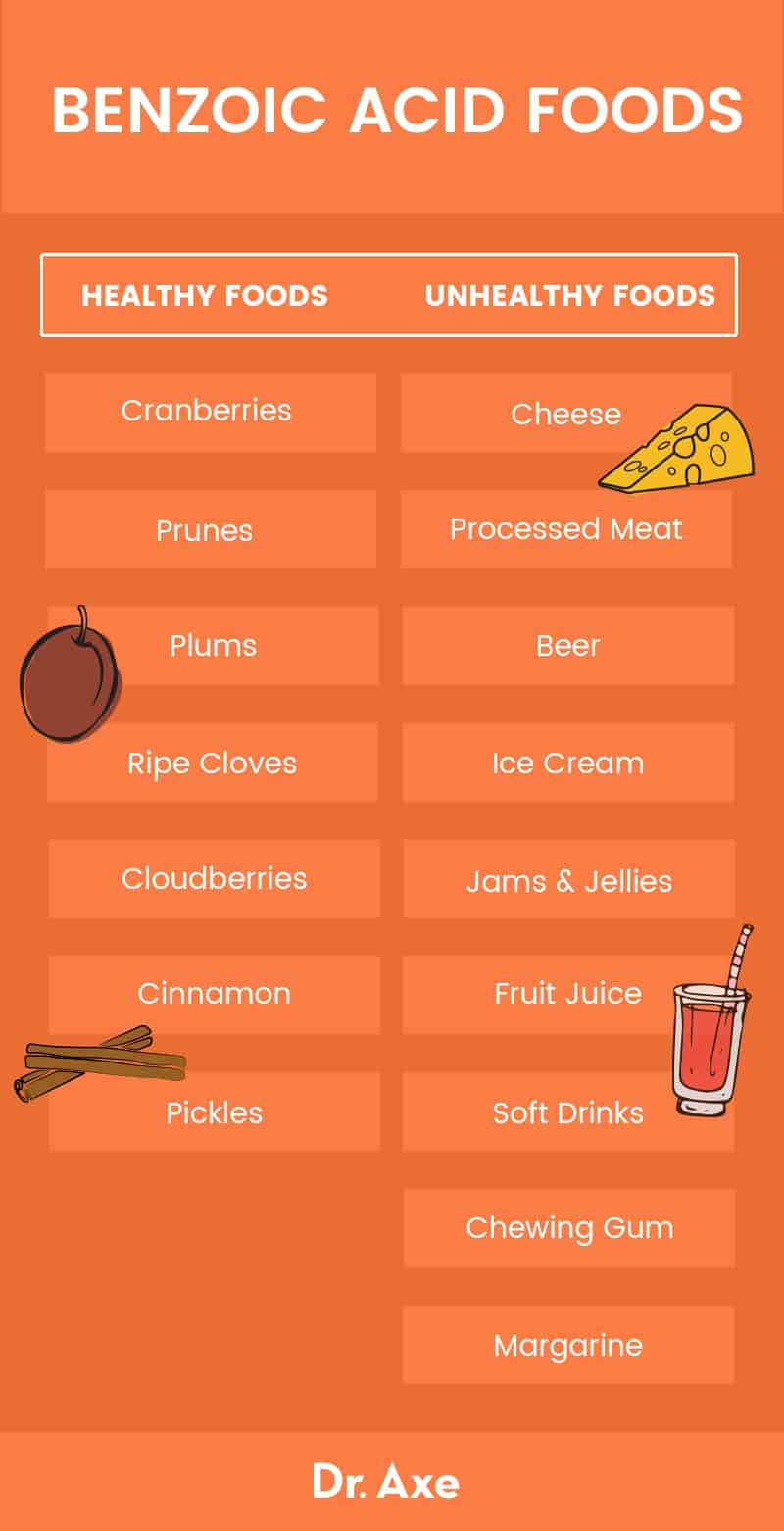This Dr. Axe content is medically reviewed or fact checked to ensure factually accurate information.
With strict editorial sourcing guidelines, we only link to academic research institutions, reputable media sites and, when research is available, medically peer-reviewed studies. Note that the numbers in parentheses (1, 2, etc.) are clickable links to these studies.
The information in our articles is NOT intended to replace a one-on-one relationship with a qualified health care professional and is not intended as medical advice.
This article is based on scientific evidence, written by experts and fact checked by our trained editorial staff. Note that the numbers in parentheses (1, 2, etc.) are clickable links to medically peer-reviewed studies.
Our team includes licensed nutritionists and dietitians, certified health education specialists, as well as certified strength and conditioning specialists, personal trainers and corrective exercise specialists. Our team aims to be not only thorough with its research, but also objective and unbiased.
The information in our articles is NOT intended to replace a one-on-one relationship with a qualified health care professional and is not intended as medical advice.
Benzoic Acid Side Effects: Is This Preservative Good or Bad for You?
January 30, 2019

Flip over just about any of the products in your pantry and there’s a pretty good chance you just may spot benzoic acid on the list of ingredients. This common preservative is naturally present in many types of foods and is also sometimes added to processed foods, cosmetics and ointments as well. Not only can it help fight off the growth of fungi and bacteria to help extend shelf life, but it’s also been shown to help soothe the skin and decrease inflammation.
However, despite being generally recognized as safe by the U.S. Food and Drug Administartion, benzoic acid has also been the subject of a good amount of controversy and may be linked to several adverse effects on health. Ready to learn more? Here’s what you need to know about this compound and where it may be lurking in your diet.
What Is Benzoic Acid?
Benzoic acid is a compound that is found naturally in many foods, including cranberries, plums and prunes. In its synthetic form, it’s also often used as a food preservative and added to processed products in order to extend shelf life and prevent bacterial growth.
Commercial benzoic acid is cheap, widely available and can be produced from many different sources, including from benzyl alcohol, benzyl chloride and benzaldehyde. It’s also fairly versatile and works well in a variety of different products. In fact, the benzoic acid solubility differs slightly based on temperature but is considered highly soluble when added to hot water.
Studies show that this compound may be linked to several health benefits, thanks largely to its anti-inflammatory, antimicrobial properties. However, it has also been associated with some risks and downsides that need to be considered as well. Let’s take a closer look at some of the uses, side effects and dangers of this powerful preservative and how it can affect health.
Related: Hydrochloric Acid that Defends Against GERD, Candida & Leaky Gut
Benefits
1. Fights Fungi
One of the most common benzoic acid uses is as a preservative in processed foods. This is because it has antimicrobial properties that block the growth of fungus to help extend shelf life. For example, one study published in Applied and Environmental Microbiology showed that it was effective at killing off Saccharomyces cerevisiae, a type of yeast that can cause spoilage of food products over time.
2. Reduces Skin Inflammation
Many people spot this acid on the ingredients list of cosmetics and skin care products and wonder: Is benzoic acid good for skin? Benzoic acid has been shown to have anti-inflammatory, skin-soothing properties, which can help calm irritation and prevent inflammation. According to a 2016 animal model published in the Journal of Drugs in Dermatology, an ointment containing benzoic acid along with other ingredients, such as salicylic acid and oak bark extract, was able to preserve skin integrity and reduce irritation caused by shaving.
3. Prevents Infection
In addition to decreasing skin inflammation, benzoic acid is also often combined with salicylic acid and used to treat skin infections. Many medications contain these two powerful ingredients, both of which work together to help promote the shedding of dead skin cells while also preventing infection caused by yeast or bacteria. This medication is typically applied topically twice daily. It can be used to treat conditions like burns, insect bites, eczema and fungal infections.
4. Extends Shelf Life
Benzoic acid can help keep food products fresher for longer by fighting bacterial growth and extending shelf life. It’s commonly found in processed foods like cheese and meat, but it is also found naturally in certain foods, including many fruits and vegetables. In fact, cloudberries are thought to contain high levels of benzoic acid and can be stored for longer periods of time than other fruits without the risk of spoilage.
5. May Improve Mental Health
Although current research is limited, some studies have found that sodium benzoate, the sodium salt of benzoic acid, could be useful in the treatment of several mental health conditions. For example, two case report studies showed that administration of sodium benzoate was able to decrease symptoms of major depression as well as panic disorder. Other research shows that it could also improve symptoms of schizophrenia by up to 21 percent compared to a placebo. However, more large, high-quality studies are needed to understand if these findings may also apply to benzoic acid and whether or not it could be beneficial for the general population.

Side Effects and Dangers
Benzoic acid is generally recognized as safe by the FDA when used in food amounts, with a maximum usage set at 0.1 percent for food products. However, there are still several benzoic acid hazards to consider, especially when this compound becomes a regular part of your diet.
For instance, several studies have found that sodium benzoate, which is the sodium salt of this acid, may be tied to increased hyperactivity. Additionally, another study conducted by Benedictine University found that a higher intake of beverages rich in sodium benzoate may contribute to increased ADHD symptoms in college students.
Many people also commonly wonder: Is benzoic acid a carcinogen? Although the acid itself is not carcinogenic, it can form benzene when combined with vitamin C. Benzene is a compound that has been associated with a higher risk of cancer development. Carbonated beverages, in particular, contain the highest amount of benzene. Some research suggests that sugar-free beverages may be more prone to benzene formation.
Sources
So what foods contain benzoic acid? You can find this naturally occurring ingredient in fruits and vegetables, including certain types of fruit. Cranberries, prunes, plums, ripe cloves, cloudberries and cinnamon are a few examples of foods that contain it naturally.
However, the most common source of benzoic acid in food is in synthetic form, which is used as a preservative in many processed ingredients. Some hidden sources of benzoic acid include:
- Cheese
- Processed meat (deli, cold cuts, bacon, etc.)
- Beer
- Ice cream
- Jams and jellies
- Fruit juice
- Soft drinks
- Chewing gum
- Margarine
- Pickles
Benzoic Acid vs. Salicylic Acid vs. Sodium Benzoate
Benzoic acid is a common ingredient added to food products and cosmetics alike to help extend shelf life and fight the growth of yeast and bacteria. Sodium benzoate is also used as a preservative and is actually the sodium salt of benzoic acid. Similar to the acid, it also occurs naturally in many foods but can be produced commercially as well by reacting benzoic acid with sodium hydroxide.
Salicylic acid, on the other hand, has many similarities to benzoic acid. In fact, chemically, it’s very similar to the benzoic acid structure and benzoic acid formula but is slightly more acidic and contains an extra oxygen molecule. It’s also used as a preservative and antiseptic and is added to medications and topical creams to help promote skin health.
Both sodium benzoate and salicylic acid have minute differences compared to the benzoic acid molar mass, benzoic acid molecular weight and benzoic acid melting point range. However, all three are used in similar ways and can be found in many of the same sources.
History/Facts
Benzoic acid was initially discovered in the 16th century and was first described by French physician Nostradamus in 1556. In 1830, chemists Pierre Robiquet and Antoine Boutron-Charlard began conducting a series of experiments that resulted in the production of benzaldehyde. A few years later in 1832, Justus von Liebig and Friedrich Wöhler were finally able to identify the benzoic acid structure and chemical composition.
However, it wasn’t until much later that the powerful properties of this compound were finally understood. In 1875, German biochemist Ernst Leopold Salkowski unearthed the antifungal properties associated with it, leading to its eventual use in the food industry as a common additive and preservative.
Today, this compound is often found in a variety of food products and cosmetics thanks to its ability to extend shelf life and fight infection. It’s also been identified as a naturally occurring compound in many different foods, including cranberries, plums, prunes and cloves.
Precautions
Is benzoic acid harmful to humans? Although it has obtained generally recognized as safe status by the FDA, there are still some concerns with the benzoic acid safety profile. In particular, certain forms have been linked to increased hyperactivity and ADHD symptoms. When combined with vitamin C, it may also form benzene, a compound that has been associated with cancer development.
Therefore, it’s best to limit consumption of processed foods that contain this compound in any of its forms. Not only are they likely pumped full of other fillers and additives that could potentially be harmful to health, but they’re also typically high in sodium, added sugar and other unhealthy ingredients as well.
Additionally, this acid has been linked to several adverse side effects in some people. So what are the side effects of benzoic acid? For some, it may cause irritation and inflammation. It may also trigger food allergy symptoms in certain people, including rashes, itching and swelling. If you experience these or any other adverse side effects, it’s recommended to discontinue use and consult with your doctor.
Final Thoughts
- Benzoic acid is a compound that is found in both synthetic and natural sources, including certain fruits, beverages and processed foods.
- It is often used as a preservative to extend the shelf life of products while also blocking the growth of bacteria.
- It’s sometimes found in cosmetics or skin creams as well and may decrease inflammation and skin irritation, especially when combined with salicylic acid.
- However, this acid may also be tied to several adverse effects on health. Studies show that it could potentially increase hyperactivity and may be converted into a carcinogenic compound called benzene when combined with vitamin C.
- Therefore, it’s best to keep intake of processed foods in moderation. Not only can this help limit the amount of added sugars, sodium, fillers and preservatives in your diet, but it can also reduce the risk of any side effects associated with benzoic acid.




